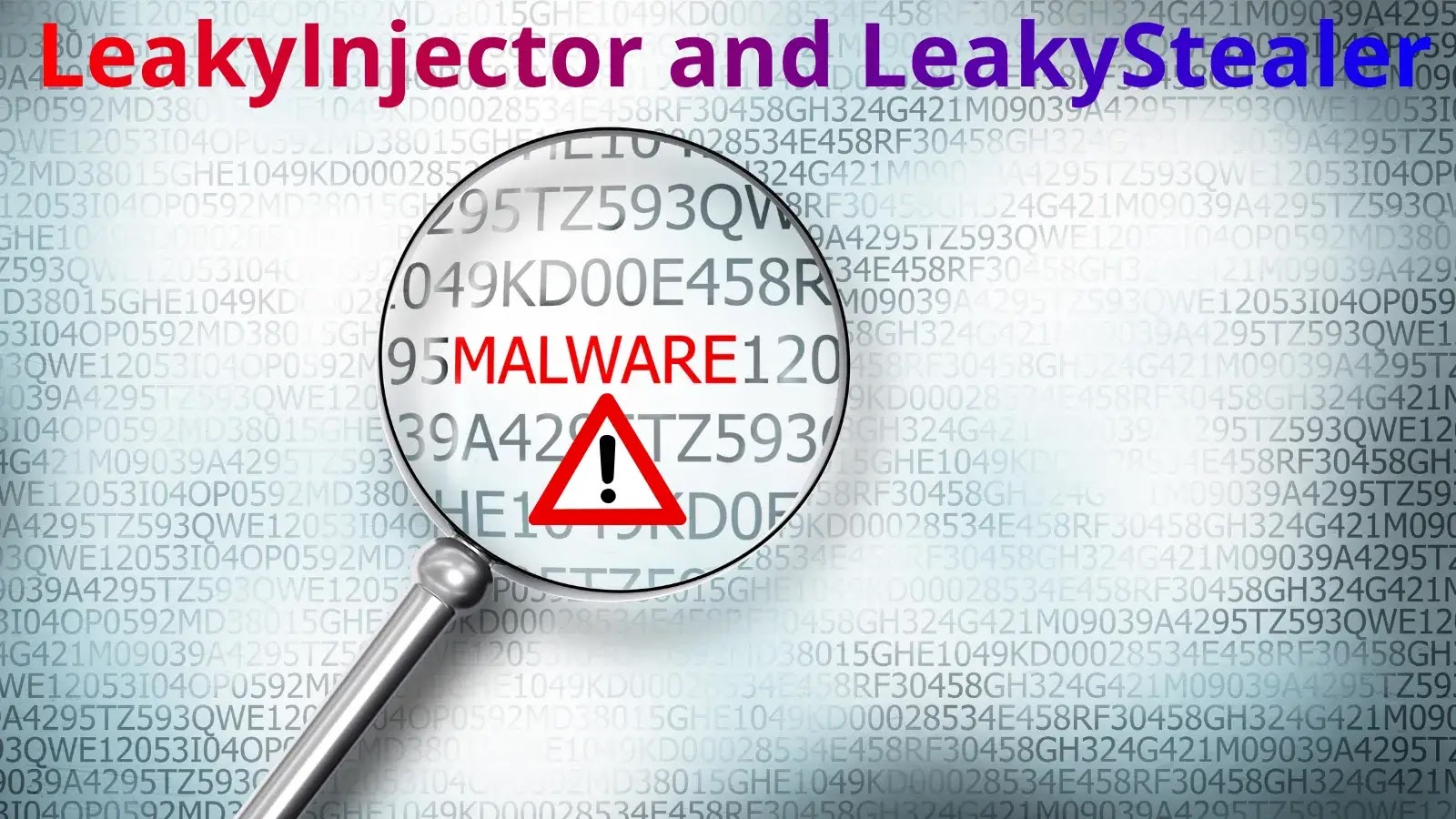
LeakyInjector and LeakyStealer Malwares Attacks Users to Steal Crypto’s and Browser History
Unmasking LeakyInjector and LeakyStealer: A Two-Stage Threat to Your Crypto and Browser Data
In the evolving threat landscape, sophisticated malware campaigns continuously pose significant risks to digital assets and personal privacy. A recent and particularly concerning example is the discovery of LeakyInjector and LeakyStealer, a dangerous two-stage malware duo specifically engineered to pilfer cryptocurrency wallets and sensitive browser information from unsuspecting Windows users. This article delves into the mechanics of this coordinated attack, its impact, and crucial remediation strategies to safeguard your digital life.
The LeakyInjector and LeakyStealer Modus Operandi
The attack initiated by LeakyInjector and LeakyStealer exemplifies a stealthy and efficient approach to data exfiltration. The process unfolds in a meticulously orchestrated two-stage sequence:
- Stage 1: LeakyInjector’s Covert Infiltration: The initial compromise begins with LeakyInjector. This first-stage malware acts as a highly effective dropper, designed to evade detection and establish a foothold on the target Windows system. Its primary role is to inject the more insidious LeakyStealer into a legitimate process, specifically
explorer.exe. This injection technique is significant because it leverages low-level Windows functionalities, making detection challenging for conventional security measures. By piggybacking on a trusted system process, LeakyStealer gains an elevated level of legitimacy within the operating system, further complicating its identification and removal. - Stage 2: LeakyStealer’s Data Exfiltration Spree: Once LeakyStealer is injected and active, it begins its malicious operations. Its core function is to systematically scan and extract highly sensitive data. This includes:
- Cryptocurrency Wallet Information: LeakyStealer targets various cryptocurrency wallets, aiming to steal private keys, seed phrases, and other critical authentication details that grant access to digital assets.
- Browser History and Credentials: Beyond crypto, the malware meticulously harvests browser history, stored passwords, autofill data, and session cookies from installed web browsers. This information can then be used for identity theft, unauthorized account access, and further malicious activities.
- System Information: To aid in further exploits or to identify high-value targets, LeakyStealer also collects a range of system information, including hardware specifications, operating system details, and network configurations.
The combination of LeakyInjector’s stealthy delivery and LeakyStealer’s comprehensive data theft capabilities creates a formidable threat that can lead to significant financial losses and privacy breaches for affected users.
Impact on Users and Organizations
The ramifications of a LeakyInjector and LeakyStealer infection can be severe:
- Financial Loss: The primary objective of this malware duo is to steal cryptocurrencies, leading directly to irreversible financial losses for victims.
- Data Breach: Stolen browser history, passwords, and other credentials can expose users to identity theft, account hijacking across various online platforms, and fraudulent transactions.
- Reputational Damage: For organizations, a breach facilitated by such malware can result in significant reputational damage, loss of customer trust, and potential legal repercussions.
- Further Exploitation: The collected system information can be used by threat actors to plan subsequent, more targeted attacks or to sell access to compromised systems on dark web forums.
Remediation Actions and Prevention Strategies
Mitigating the risk of LeakyInjector and LeakyStealer requires a multi-layered approach to cybersecurity. Here are critical remediation actions and preventive measures:
- Endpoint Detection and Response (EDR) Systems: Deploy robust EDR solutions that can detect suspicious process injection techniques and anomalous behavior, which are hallmarks of LeakyInjector’s operation.
- Regular Software Updates: Ensure that all operating systems, web browsers, and cryptocurrency wallet software are kept up-to-date with the latest security patches. Many malware rely on exploiting known vulnerabilities (e.g., potential vulnerabilities like CVE-2023-XXXXX, though no specific CVE is associated with this particular malware delivery at this time).
- Strong, Unique Passwords and Multi-Factor Authentication (MFA): Implement strong, unique passwords for all online accounts and enable MFA wherever possible, especially for cryptocurrency exchanges and critical banking services. This adds a crucial layer of defense even if credentials are compromised.
- Email and Phishing Awareness Training: Educate users about identifying and avoiding phishing attempts, malicious attachments, and suspicious links, as these are common vectors for initial malware infection.
- Reputable Antivirus/Anti-Malware Solutions: Utilize high-quality antivirus and anti-malware software with real-time protection and behavioral analysis capabilities.
- Network Segmentation: For organizational environments, segmenting networks can help contain the spread of malware and limit access to critical assets should a breach occur.
- Regular Data Backups: Maintain regular, secure backups of essential data, especially cryptocurrency wallet files, in an offline or air-gapped location to facilitate recovery in case of data loss or encryption.
- Browser Security Best Practices: Configure browser security settings for maximum protection, avoid installing untrusted browser extensions, and regularly clear browser data.
| Tool Name | Purpose | Link |
|---|---|---|
| Endpoint Detection and Response (EDR) | Advanced threat detection, investigation, and response for endpoints. | (Vendor Specific – e.g., SentinelOne, CrowdStrike, Microsoft Defender ATP) |
| Anti-Malware Software | Real-time protection against various malware, including stealers. | (Vendor Specific – e.g., Malwarebytes, Bitdefender, ESET) |
| Password Manager | Securely store and generate strong, unique passwords. | (Vendor Specific – e.g., LastPass, 1Password, Bitwarden) |
| Network Intrusion Detection/Prevention Systems (NIDS/NIPS) | Monitor network traffic for malicious activity and block threats. | (Vendor Specific – e.g., Snort, Suricata, FortiGate) |
Conclusion
The emergence of LeakyInjector and LeakyStealer underscores the persistent and evolving nature of cyber threats targeting valuable digital assets and personal information. By understanding the intricate mechanisms of this two-stage malware and implementing robust, proactive cybersecurity measures, users and organizations can significantly bolster their defenses. Vigilance, education, and the strategic deployment of security technologies are paramount in protecting against sophisticated data-stealing campaigns and ensuring the integrity of our digital lives.





